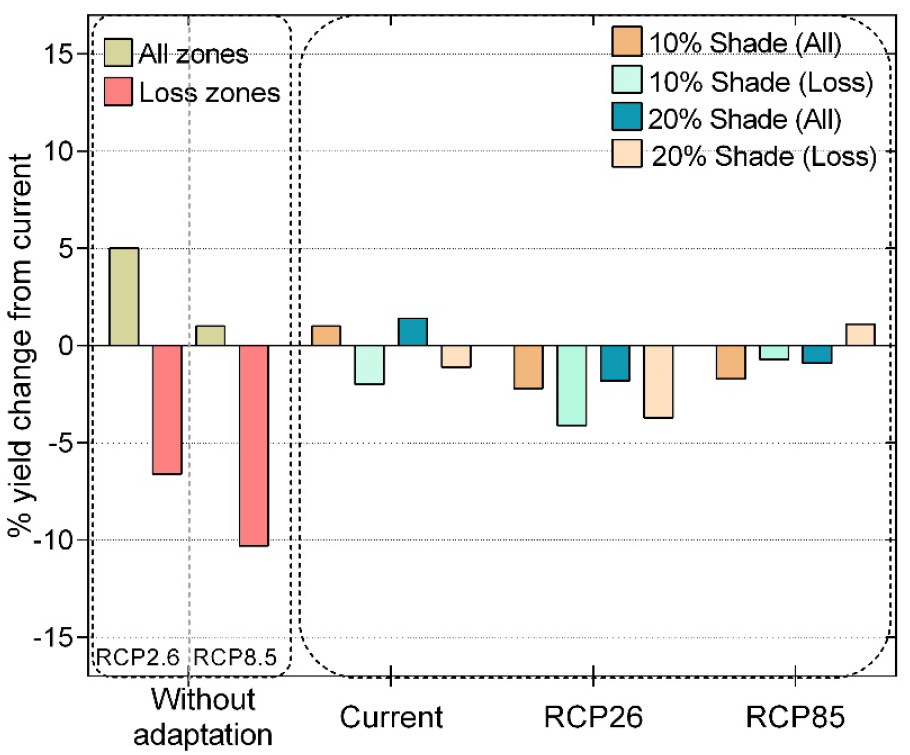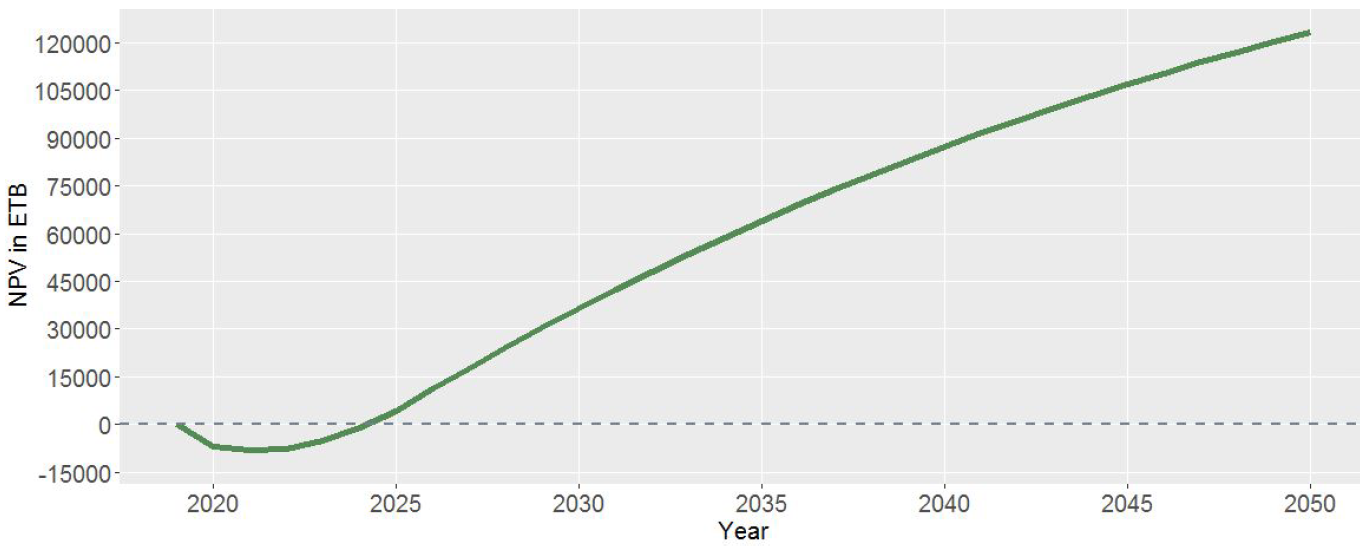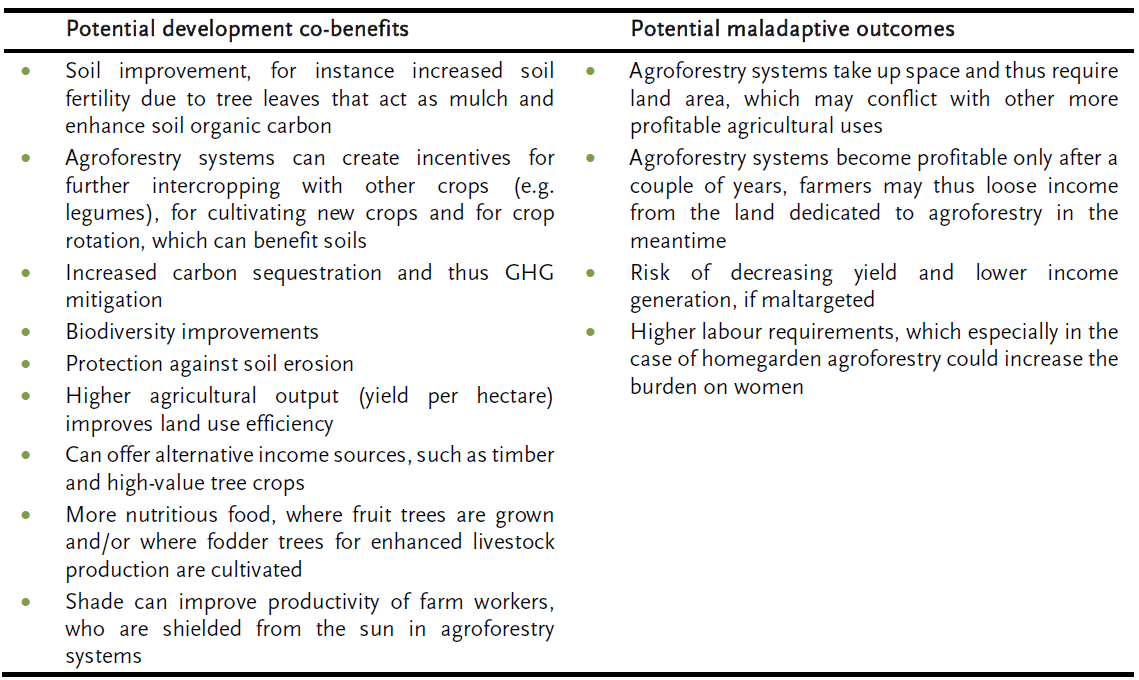Ethiopia: Agroforestry
Agroforestry is a complex field of interventions, comprising many different specific practices. In the climate risk analysis, we mainly considered the integration of trees in farming systems and tree-crop production. Agroforestry practices are considered as climate change adaptation for several reasons: Trees integrated in farming systems provide shade and thus lower temperature and enhance soil moisture, regulating the microclimate (Lasco, Delfino, & Espaldon, 2014). They generally save water, as they reduce evapotranspiration and improve soil fertility, for instance with falling leaves acting as mulch. Further, agroforestry systems can reduce pests and diseases. In terms of risk response, agroforestry systems are thus able to reduce risk from changing climatic conditions, such as rising temperatures and erratic precipitation. In addition, soil erosion can be lowered with targeted forestation, particularly on steep slopes.
An analysis of the effectiveness of agroforestry using a process-based crop model showed that agroforestry has the potential to stabilise maize yields in zones which are projected to experience yield losses under climate change (see Figure 5). 10 % or 20 % shade levels can reduce the losses projected (between 4-26 % in some zones), but would negatively affect yields in zones which are projected to benefit from climate change. However, those results are rather conservative, as they do not take into account the potential yield increases and other benefits of enhanced soil organic carbon due to agroforestry strategies, for instance.

The economic analysis showed that adapting maize production with agroforestry is very beneficial in comparison to the inaction scenario. Over time, it has a highly positive return on investment, with a benefit-cost ratio (BCR) of 5.1 and an internal rate of return (IRR) of 42.7 % (see Figure 6).

Further, agroforestry practices offer scope for many development co-benefits, which are described in Table 3.

All in all, agroforestry appears to be one of the most promising adaptation strategies considered in the climate risk analysis, thanks to the many co-benefits it can offer, when implemented wisely.
References
Lasco, R. D., Delfino, R. J. P., & Espaldon, M. L. O. (2014). Agroforestry systems: Helping small-holders adapt to climate risks while mitigating climate change. Wiley Interdisciplinary Reviews: Climate Change, 5(6), 825–833.


